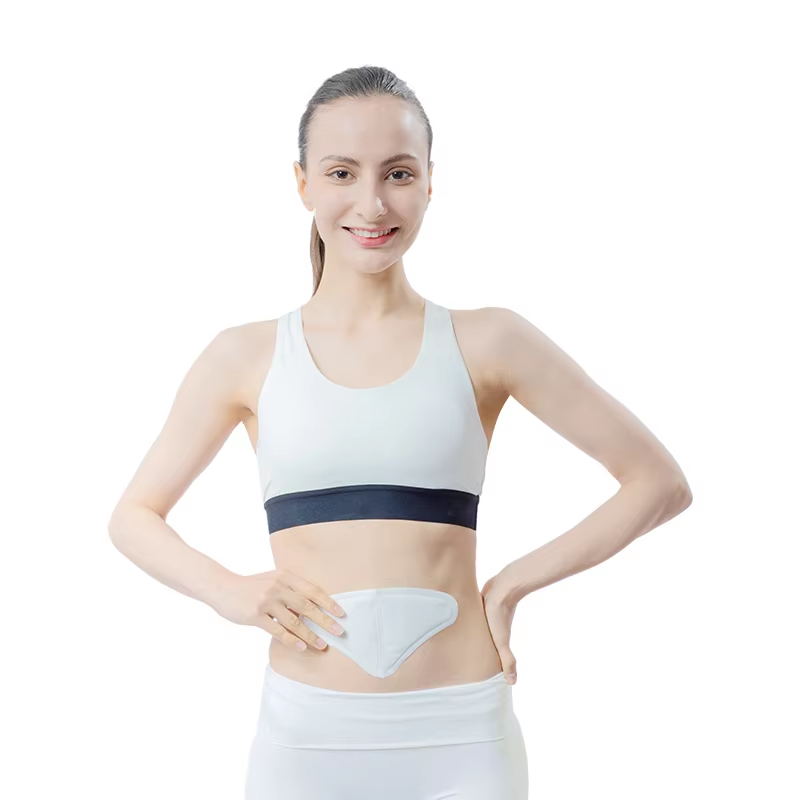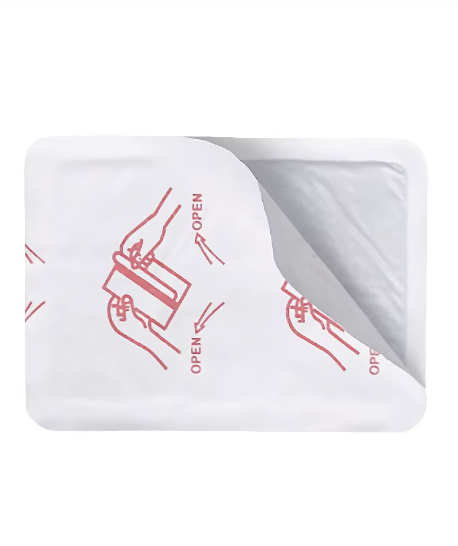Understanding Pain Types and Appropriate Patch Solutions
Neuropathic Pain: Targeting Nerve Discomfort
Neuropathic pain comes from damaged nerve fibers, usually caused by things like diabetes or shingles outbreaks. People who suffer from this kind of pain often describe it as feeling like burning, tingling, or getting stabbed repeatedly in certain spots. Managing neuropathic pain can really be tough since traditional methods don't always work well enough. Pain relief patches have become quite popular for treating these symptoms because they actually put medicine right where the nerves are acting up. These patches contain stuff like lidocaine, which works pretty well according to various studies looking at people with nerve pain issues. The big advantage here is that the medication goes straight to where it's needed most, so patients get relief exactly where they need it without having to take pills that might affect other parts of their body.
Musculoskeletal Aches: Addressing Muscle and Joint Issues
When people talk about musculoskeletal pain, they're referring to discomfort in the muscles, bones, and joints that usually comes from things like overuse, injuries, or problems such as arthritis. Pain relief patches have become pretty important for managing this kind of pain because they help cut down on inflammation and provide some numbing effect. The Centers for Disease Control and Prevention actually points out that these kinds of disorders rank right at the top when it comes to common health issues, impacting millions across the country and costing healthcare systems a fortune each year. What makes patches work so well is how they get those anti-inflammatory stuff like methyl salicylate and menthol straight to where it hurts. This direct delivery method gives them an edge since traditional medications might cause unwanted side effects throughout the body. For folks dealing with chronic pain, this localized treatment option often proves much more manageable than other approaches.
Arthritis Management: Inflammation-Focused Approaches
There are many different forms of arthritis out there, like rheumatoid arthritis and osteoarthritis, and inflammation plays a big role in making joints hurt so much. Pain relief patches have stuff in them that goes after this inflammation directly. Things like capsaicin from chili peppers and methyl salicylate (which is similar to aspirin) are what makes these patches work. Most people find that these ingredients really help cut down on the pain while also letting their joints move better. Doctors generally back up the use of these patches because they tend to work pretty well against arthritis pain. Some studies even show that folks who don't get much relief from other methods often respond positively to patches, especially when controlling inflammation becomes a priority in treatment plans. Arthritis sufferers might want to try these patches since they provide targeted relief without all the side effects that come with taking pills or liquid medications throughout the day.
Active Ingredients in Pain Relief Patches
Lidocaine: Numbing Agents for Localized Relief
Lidocaine appears in numerous pain relief patches available on store shelves today. The drug functions by interfering with those specialized sodium channels in nerve cells that transmit pain signals. These channels tend to act up in situations such as neuropathic pain disorders. When blocked, they stop sending those painful messages through the nervous system, which explains why people feel less discomfort in the treated area. Researchers have actually looked into how well lidocaine works across different types of pain management scenarios. A particular study worth mentioning found that regular strength OTC lidocaine patches provided real help for folks suffering from arthritis flare-ups and chronic lower back pain. What's interesting? They worked almost as well as their stronger prescription counterparts according to Castro and Dent's research findings.
Capsaicin: Heat-Based Solutions for Chronic Conditions
Capsaicin comes from chili peppers and works by making nerve receptors less sensitive, which helps cut down on pain sensations. People often find it helpful for long term issues like arthritis or nerve pain problems. When applied, capsaicin interacts with certain receptors in the nerves. At first, this causes a burning feeling, but then things start to numb out. Research shows that patches containing capsaicin can offer some relief for folks dealing with ongoing pain. Looking at all the studies together, there's evidence that capsaicin performs better than just dummy treatments for both nerve-related and muscle/skeleton pain. However, not everyone gets amazing results either. Still, many people turn to capsaicin products when looking for something different from regular prescription meds.
Menthol vs. Methyl Salicylate: Cooling vs. Warming Effects
Menthol and methyl salicylate work differently when it comes to pain relief, making them suitable for various situations. Menthol gives off that cool feeling people love, which makes it great for quick relief from sore muscles after a workout or sudden injuries. On the flip side, methyl salicylate warms things up instead, helping increase circulation around stiff joints and tight muscles. When deciding which one to use, folks usually look at what kind of pain they're dealing with plus how their body responds. Many users report that menthol kicks in fast for those sharp pains, while others swear by the slow heat from methyl salicylate for long term issues like arthritis or repetitive strain injuries because it seems to sink deeper into tissues over time.
Herbal Alternatives: Natural Ingredients Compared
More and more folks are turning to pain relief patches made with herbs such as arnica and lavender instead of traditional medications. Many people find these plant-based ingredients appealing because they seem safer and work more gently on the body. Research on herbal patches tells mixed stories really. Some studies show they can be just as effective as regular patches in certain situations though. Take arnica for example it actually seems to help with muscle soreness after workouts according to some research. A lot of consumers go for these herbal options simply because they worry about all the possible side effects from synthetic drugs. This explains why we're seeing such a big boost in demand for natural pain relief products across the market right now. Those looking for alternatives to pharmaceuticals now have real choices when it comes to managing discomfort through nature's offerings.
Choosing Based on Pain Location and Intensity
Joint Pain: Optimizing Patch Size and Adhesion
Getting the right size matters a lot when dealing with joint pain through patches. When a patch fits properly, it works better because those medicine components actually reach where they need to go. Too big and it just feels awkward on the skin, too small and parts of the painful area get left out which makes everything less effective. Stickiness also counts for something serious. If a patch stays put during normal activities like walking around or reaching overhead, then it does what it should. Joints tend to move constantly after all. The best patches for joints usually find that sweet spot between coverage and grip strength. Take Salonpas as an example many people mention online. Folks talk about how these patches stay in place without sliding off, yet still cover enough surface area to make a difference in their knee or shoulder pain throughout the day.
Lower Back Discomfort: Extended-Wear Options
Back pain in the lower region usually comes from sitting too long or bad posture habits, and it really puts a damper on daily life. Patches made specifically for this part of the body give people an easy way to get focused relief right where they need it most. The longer lasting patches beat out their short acting counterparts in several ways. These extended wear options keep working all day without needing constant changing, saving money and hassle at the same time. Studies have shown that folks using these longer lasting patches tend to feel better for much longer periods, something that matters a lot when dealing with ongoing back issues. Take the Icy Hot Lidocaine Patch for instance. Many people find that this particular brand works consistently throughout their entire day because it stays put and delivers medication effectively over time.
Acute vs. Chronic Pain: Short-Term vs. Long-Term Formulations
Dealing with pain comes in two main flavors really acute and chronic, and they need totally different approaches. Acute pain hits suddenly after something happens, like an injury or surgery, and goes away pretty quickly. That's why people reach for patches that kick in fast when they're dealing with this kind of pain. These patches usually have strong ingredients that work almost instantly to knock down the discomfort. Chronic pain tells a different story though. This type sticks around for weeks, months sometimes even years. Managing it takes something different something that lasts longer without needing constant attention. For folks stuck with ongoing pain issues, there are patches designed specifically for this purpose. Medical professionals often recommend Salonpas for those quick fix situations because it works so rapidly. When it comes to managing chronic pain day after day, many turn to Lidoderm instead. This one releases medication slowly throughout the day, giving steady relief without all the hassle of frequent applications.
Skin Sensitivity and Medical History Factors
Hypoallergenic Options for Sensitive Skin
People who have sensitive skin should take extra care when picking out pain relief patches since hypoallergenic versions really cut down on irritation and allergic reactions. The good news is these patches come made with gentler materials that don't mess with delicate skin. There are plenty of hypoallergenic options floating around nowadays, many crafted especially for folks dealing with skin issues. Most dermatologists will point patients toward patches free from typical irritants while containing ingredients that have passed safety tests. Anyone prone to skin sensitivity would do well to chat with their dermatologist first. Getting professional advice helps find the right patch for specific skin needs instead of guessing what works best.
Avoiding Interactions with Existing Conditions
People with pre-existing health problems should definitely talk to their doctor before trying out those pain relief patches. Some common ingredients found in these patches like menthol, lidocaine, and methyl salicylate might not mix well with certain conditions. We're talking about things like heart issues or medication allergies here. There have been actual cases where people ended up making their problems worse by using patches when they shouldn't have. One person developed worse skin ulcers after applying a patch, another found their chronic pain getting even more complicated. Getting proper medical advice makes all the difference. Doctors can help pick the right kind of patch based on what specifically affects each person's body and health history.
MRI Safety and Metallic Backing Risks
Pain relief patches with metal backing present real dangers when someone needs an MRI scan. The metal reacts badly with the MRI machine, which can cause serious burns or even damage tissues inside the body. Safety first means getting rid of all those patches well before heading into the scanner room. Doctors really stress this point, so patients should always double check what kind of material their patch contains before applying it anywhere on their skin. Most clinics now have lists posted near the MRI area showing which products are safe to wear. Patients who take a moment to verify this information save themselves from unnecessary complications later on, especially since similar issues can happen with other types of medical imaging too.

Maximizing Effectiveness: Application and Timing
Proper Placement Techniques for Targeted Relief
Getting the most out of those pain relief patches really depends on where they're placed on the body. For best effect, people need to put them right on top of or close to wherever it hurts. That direct skin contact makes all the difference for how well the medicine gets absorbed into the sore spot. Most folks find themselves applying these little sticky patches on their lower back after a long day at work, or maybe on achy shoulders from sitting too long at the computer. The knees are another common target area when joint pain strikes. A lot of manufacturers actually include diagrams showing exactly where to stick them, which helps newcomers figure things out without guessing around. Some even mark their packaging with simple illustrations so there's no confusion about placement.
Duration Matters: 8-Hour vs. 12-Hour Patches
When picking between patch durations, people often find that this choice makes a real difference in how much pain relief they get and what happens to their skin. Most pain relief patches are available either for 8 hours or 12 hours on the skin. Going with the longer option means less hassle since there's no need to put on another patch so soon after taking off the first one. But wait! Skin irritation can sometimes happen if someone leaves a patch on too long. A lot of folks actually prefer those 12 hour patches because they just keep working all day without stopping. Still others stick to the shorter version when their skin gets sensitive. Finding the right balance between how long the patch lasts and how sensitive the skin is really helps most people figure out what works best for them personally.
When to Reapply: Recognizing Diminished Effects
Knowing when those pain relief patches stop working properly matters a lot if someone wants to get the most out of them. Most folks tend to realize something's up when their old pain comes back or they just don't feel that same relief anymore. When it comes time to put on a new one, following what the package says makes sense. Give the skin a break between applications and try different spots on the body so nothing gets irritated. Reading through those labels carefully helps avoid using too many patches at once which could hurt the skin. And talking to doctors or pharmacists about how often to change them? That's probably smarter than guessing, especially since everyone's situation is a bit different.
FAQ Section
What types of pain can be managed with relief patches?
Pain relief patches can manage neuropathic pain, musculoskeletal aches, arthritis, and both acute and chronic pain conditions.
Are pain relief patches safe for sensitive skin?
Yes, hypoallergenic options are available for individuals with sensitive skin, minimizing the risk of irritation and allergic reactions.
Can I use pain relief patches if I have a medical condition?
It is essential to consult a healthcare provider before using pain relief patches if you have existing medical conditions to avoid potential interactions or complications.
Are there natural alternatives to conventional pain relief patches?
Yes, herbal ingredients such as arnica and lavender are used in some patches as natural alternatives for pain relief.
What precautions should I take before an MRI if I'm using pain relief patches?
Remove all patches before undergoing an MRI to avoid risks associated with metallic backing materials reacting with the machine.
Table of Contents
- Understanding Pain Types and Appropriate Patch Solutions
- Active Ingredients in Pain Relief Patches
- Choosing Based on Pain Location and Intensity
- Skin Sensitivity and Medical History Factors
- Maximizing Effectiveness: Application and Timing
-
FAQ Section
- What types of pain can be managed with relief patches?
- Are pain relief patches safe for sensitive skin?
- Can I use pain relief patches if I have a medical condition?
- Are there natural alternatives to conventional pain relief patches?
- What precautions should I take before an MRI if I'm using pain relief patches?

